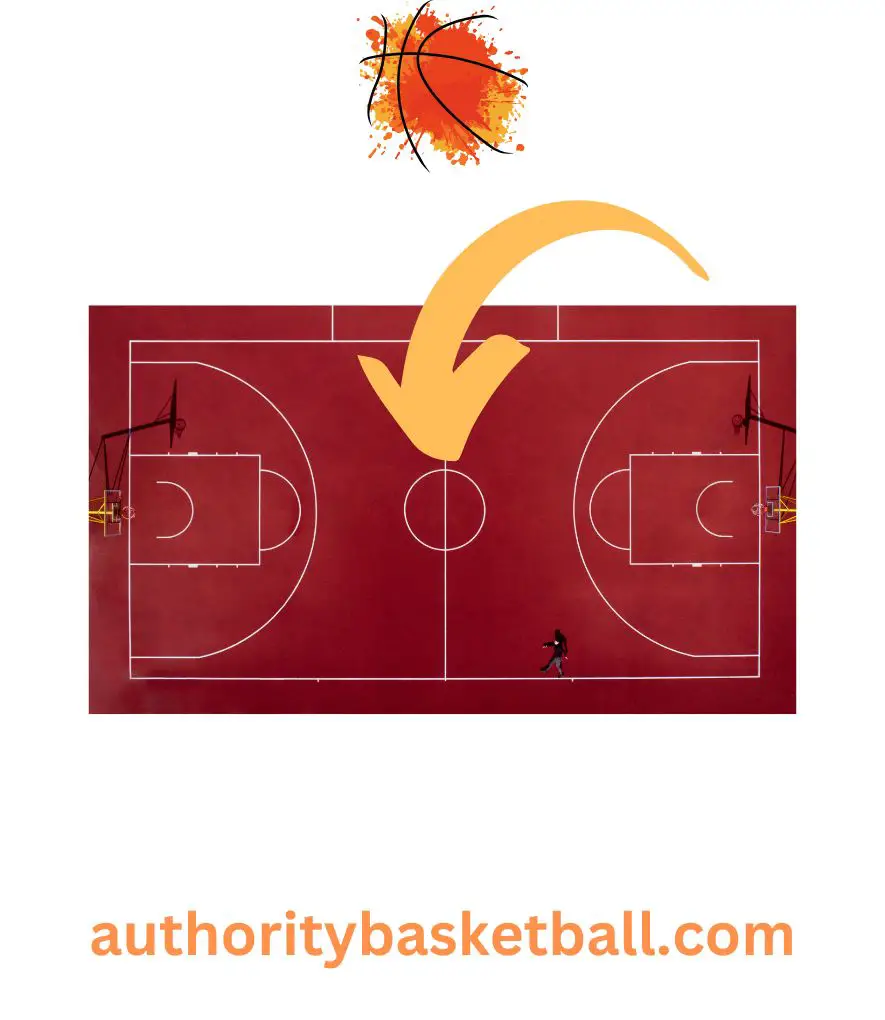Basketball is a fast-paced and exciting sport that is enjoyed by people of all ages around the world.
But even with its overwhelming popularity among spectators, I’m pretty sure there are some things that fans who follow the game never seem to understand.
More particularly, have you ever stopped for a moment to think about how you observed a basketball game getting started?
If this thought hasn’t ever crossed your mind, don’t you worry.
In this article, we will take a closer look at the various elements that go into the beginning of a basketball match.
How does a game of basketball begin?
1. A jump ball situation
The most basic way for a basketball game to begin is with a jump ball, whether it’s a professional or unprofessional match.
A jump ball is a way to start the game or resume play after a dead ball or other infraction.
It involves two players from each team standing at center court, with the official tossing the ball into the air between them.
The players then jump up and try to tap the ball to their own team, with the team that gets control of the ball gaining possession.
Like so:

Before you can begin the game, you must first determine how many players will be required as per the rule book on the court.
While most basketball teams include at least 12 players, only five can be on the court at the same time.
You must wait for a break in play to make a substitution if you want to change players.
A basketball game begins with five players from each team lining up around the half-court line.
There is a circle in the center of the court.
This circle is known as the “jump circle.”

Inside the jump circle, two players, one from each team, plus a referee, are permitted.
The other players will form a circle and wait for “the jump.”
On a lighter note…
Little did the basketball rule makers know that cramming three people into a tiny space can create some hilarious circumstances.
For example, during the match between the Denver Nuggets and the Los Angeles Clippers on February 26th, 2021, there is a humorous turn of events in the jump circle that has the referee laughing.
Check out this footage below:
It’s also very important to note that the jump ball shall be between the two involved players unless injury or ejection precludes one of the jumpers from.
If the injured player must leave the game or is ejected, the coach of the opposing team shall select from his opponent’s bench a player who will replace the injured or ejected player.
More so, if a player is removed for a concussion evaluation, his coach must choose one of the four remaining players in the game to participate in the jump.
Subsequently, the injured player may return to the game if the aforementioned evaluation is completed in accordance with the NBA Concussion Policy, and the athlete is determined not to have a concussion.
2. The tip-off
Another way that a basketball game can begin is with a “tip-off.”
While playing out this scenario, the ball will be thrown into the air by the referee, and the two players will attempt to hit it to one of their teammates—this is known as the tip-off.

Before they may touch the ball, the jumpers must wait for it to reach its highest point.
Furthermore, the players are not permitted to grip or hold onto the ball throughout the jump.
As a result, the term “tip-off” rather than “grab” was coined.
Ultimately, regardless of whether the game starts with a jump ball or a tip-off, the team that gains possession of the ball is said to have the opening possession.
This team then has a chance to score points by shooting the ball through the hoop or by passing the ball to a teammate who can do so.
The other team will then try to defend against this and try to gain possession of the ball for themselves.
Are there any alternatives to the jump ball scenario?
In some cases, a jump ball or tip-off may not be the best way to start a basketball game.
For example, if both teams have players of significantly different heights, it may be unfair for the taller players to have an advantage in a jump ball situation.
In these cases, other alternatives may be used to determine possession.
Some possibilities include:
- Coin toss: A coin is flipped to determine which team gets possession. The two players involved in the flip will have the choice to pick either “heads” or “tails” and then wait to see which side the coin lands on to decide the starting team.
- Possession arrow: An arrow is used to determine which team gets possession. The arrow is pointed towards one team at the start of the game, and then switches direction after each period.
- Alternating possession: Possession is simply taken in turns between the two teams at the start of each quarter.
What other restrictions govern how basketball games start?
There are a couple of limitations that guide players when making jump balls to avoid infractions.
One of these is that each jumper must have at least one foot on or inside the portion of the jumping circle opposite his or her own basket.
And in addition to that, their feet must be within the restraining circle.
After reaching its highest point, the ball must be touched by one or both of the jump ball players.
However, if the ball does not get tapped by at least one of the jumpers, one of the officials off the ball must whistle the ball dead and signal another throw.
Neither jumper is allowed to leave his or her half of the jumping circle until the ball has been thrown.
Also, jumpers are not allowed to grab the tossed or tapped ball until it makes contact with one of the eight non-jumpers, the floor, the hoop, or the backboard.
On any given jump, neither of the jumpers may touch the ball more than twice.
The eight non-jumpers must stay outside the restraining circle until the ball is tapped.
Closing thoughts
As you can see, a basketball game can start in a variety of ways.
The start of a basketball game is an exciting and crucial component of the sport, whether it be with a jump ball, tip-off, or one of the listed alternatives.
So, the next time you watch a basketball game, take attention to how the game starts and all of the numerous variables that contribute to it.
Also before you leave, take a look at similar content pertaining to the rules of basketball over on our blog, such as:
- What a foul is in basketball;
- What the APG statistic in basketball is all about;
- Whether players can jump when taking a free throw shot in basketball; and
- Whether basketball is a contact sport
- The Most Popular Prop Bets Made During the NCAA Final Four Tournament - February 9, 2024
- Evaluating the Enigma: Does LeBron James Possess a No-Trade Clause? - May 16, 2023
- Gravity’s Dance: Unveiling the Art of Bouncing Basketballs - May 16, 2023

